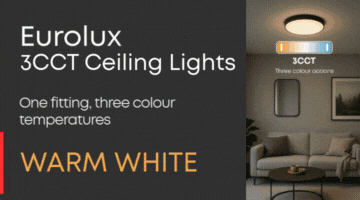Efficient, compliant, and safe road lighting plays a critical role in ensuring visibility, enhancing security, and enabling safer mobility across South Africa’s transport infrastructure, according to the Illumination Engineering Society of South Africa (IESSA).
 Engineers and electrical professionals involved in lighting design must balance complex factors such as road classification, performance standards, and maintenance to ensure robust and compliant lighting solutions.
Engineers and electrical professionals involved in lighting design must balance complex factors such as road classification, performance standards, and maintenance to ensure robust and compliant lighting solutions.
This guide from IESSA outlines key considerations when designing road and precinct lighting in South Africa, including road classifications, lighting calculation methodologies, maintenance guidelines, and applicable standards.
Road types and classifications
South African roads are classified primarily based on function, traffic volume, and role in the transport network. These classifications help engineers determine appropriate lighting methodologies, either luminance-based or illuminance-based, as outlined in SANS 10098-1.
Group A (A1–A4): Major roads and freeways
Includes national roads, freeways, high-volume arterials and collector roads.
These are high-speed, high-traffic routes where luminance-based lighting design and glare limitation are essential and to support driver visibility, especially at interchanges, off-ramps, and key decision points.
Luminance reflects the brightness of the road surface as seen by the driver and considers:
- Observer position
- Reflectance of the surface (default R3 in SA)
- Uniformity of luminance
- Glare (threshold increment)
- Luminance measurements can only be conducted with a luminance meter and not an illuminance meter.
Group B (B1–B3): Residential streets
Covers urban arterial roads and local residential roads that connect various neighbourhoods or commercial areas.
Emphasis is on horizontal illuminance, ensuring uniform lighting for mixed traffic and pedestrian use.
Group C (C1–C2): Wholly pedestrian areas
Applies only to pedestrian paths, precincts, and parks.
Lighting design here focuses on semi-cylindrical illuminance and enhancing comfort, safety, and aesthetics within communities.
For Groups B and C, illuminance (horizontal or semi-cylindrical) is used, measured with an illuminance meter at ground or eye level for pedestrian-focused areas.
Lighting calculations:
Accurate photometric design is at the heart of effective lighting.
The Point-by-Point (PBP) calculation method is one of the most reliable for detailed lighting design. It involves calculating the illumination at specific points on a surface based on the luminaires' photometric data.
Key parameters include:
- Luminous Intensity Distribution (LID) of the light source
- Mounting height of luminaires
- Luminaire spacing
- Tilt angle and overhang
- Surface reflectance.
PBP ensures precise illumination analysis and is often supported by lighting design software such as DIALux, AGi32, or Relux. Engineers use this method to meet SANS 10098 recommendations for minimum average illuminance (Eav), uniformity ratio (Emin/Eav), and glare control (threshold increment).
Maintenance and lumen depreciation: ARP 035 Guidelines
Maintenance is a critical yet often overlooked component of lighting infrastructure.
The Association of Reticulation of Public Lighting’s ARP 035 provides industry-accepted guidelines for maintaining lighting systems and ensuring longevity and performance. It includes:
- Maintenance Factor (MF) determination, which accounts for lamp lumen depreciation (LLD), luminaire dirt depreciation (LDD), and environment
- Scheduled cleaning and relamping intervals
- Inspection and performance testing protocols
- Recordkeeping and maintenance documentation.
Designers must incorporate a suitable MF (typically ranging from 0.7 to 0.9) into lighting calculations to ensure minimum light levels are sustained over the luminaire’s lifetime.
**Read the rest on the IESSA website, here.







